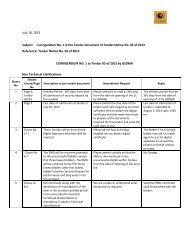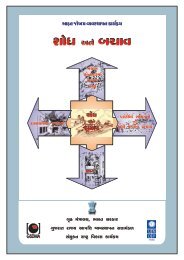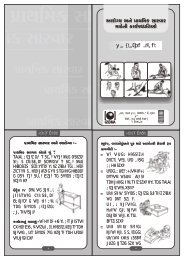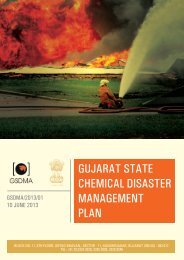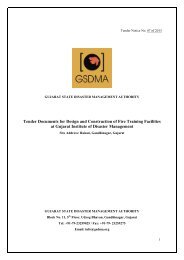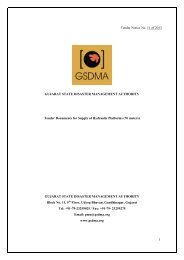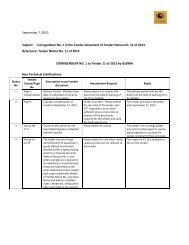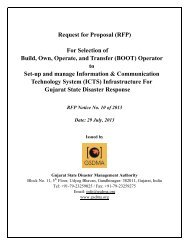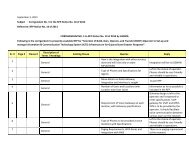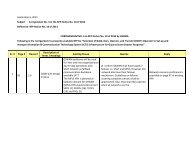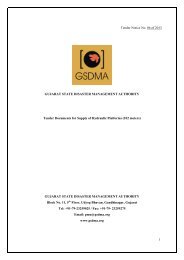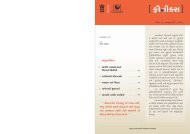Emergency Response Guidebook - Gujarat State Disaster ...
Emergency Response Guidebook - Gujarat State Disaster ...
Emergency Response Guidebook - Gujarat State Disaster ...
Create successful ePaper yourself
Turn your PDF publications into a flip-book with our unique Google optimized e-Paper software.
HOW TO USE TABLE 1 - INITIAL ISOLATION ANDPROTECTIVE ACTION DISTANCES(1) The responder should already have:• Identified the material by its ID Number and Name; (if an ID Number can not be found,use the Name of Material index in the blue-bordered pages to locate that number.)• Found the three-digit guide for that material in order to consult the emergencyactions recommended jointly with this table;• Noted the wind direction.(2) Look in Table 1 (the green-bordered pages) for the ID Number and Name of theMaterial involved in the incident. Some ID Numbers have more than oneshipping name listed look for the specific name of the material. (If the shippingname is not known and Table 1 lists more than one name for the same IDNumber, use the entry with the largest protective action distances.)(3) Determine if the incident involves a SMALL or LARGE spill and if DAY or NIGHT.Generally, a SMALL SPILL is one which involves a single, small package (e.g., a d r u mcontaining up to approximately 208 liters, a small cylinder, or a small leak from alarge package. A LARGE SPILL is one which involves a spill from a large package,or multiple spills from many small packages. DAY is any time after sunrise andbefore sunset. NIGHT is any time between sunset and sunrise.(4) Look up the initial ISOLATION distance.Direct all persons to move, in a crosswinddirection, away from the spill to the distancespecified—in meters and feet.(5) Look up the initial PROTECTIVE ACTION DISTANCE shown in Table 1. For a givenmaterial, spill size, and whether day or night, Table 1 gives the downwinddistance—in kilometers and miles— for which protective actions should beconsidered. For practical purposes, the Protective Action Zone (i.e., the area inwhich people are at risk of harmful exposure) is a square, whose length andwidth are the same as the downwind distance shown in Table 1.Page 292SpillInitial IsolationZoneInitial IsolationDistance(6) Initiate Protective Actions to the extent possible, beginning with those closest tothe spill site and working away from the site in the downwind direction. When awater-reactive TIH producing material is spilled into a river or stream, the sourceof the toxic gas may move with the current or stretch from the spill pointdownstream for a substantial distance.The shape of the area in which protective actions should be taken (the ProtectiveAction Zone) is shown in this figure. The spill is located at the center of the smallcircle. The larger circle represents the INITIAL ISOLATION zonearound the spill.UPWIND Wind Direction DOWNWINDProtectiveAction ZoneInitialIsolationZoneNOTE 1:NOTE 2:SpillDistanceWind DirectionSee “Introduction To Green Tables – InitialIsolation And Protective Action Distances” under"Factors That May Change the Protective ActionDistances" (page 285)See Table 2 – Water-Reactive Materials whichProduce Toxic Gases for the list of gases producedwhen these materials are spilled in water.½ DownwindDistance½ DownwindDistanceCall the emergency response telephone number listed on the shipping paperor the appropriate response agency as soon as possible for additionalinformation on the material, safety precautions and mitigation procedures.Page 293



